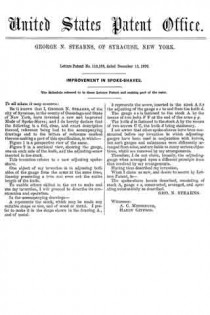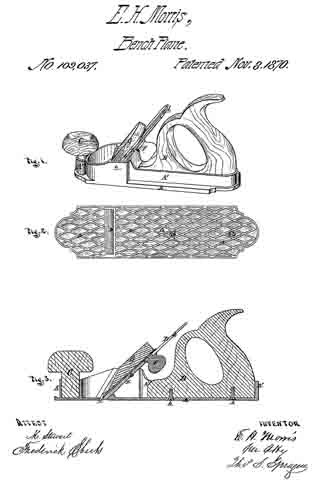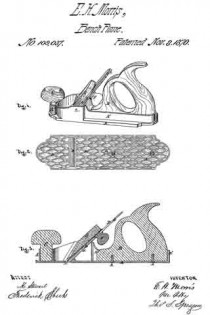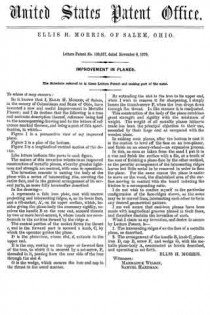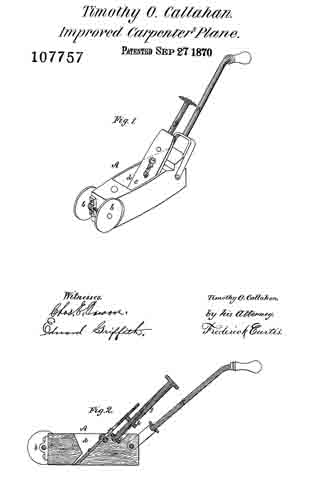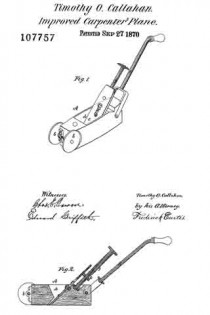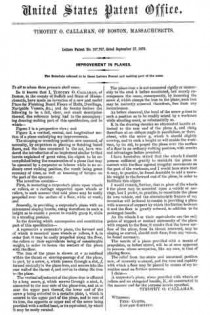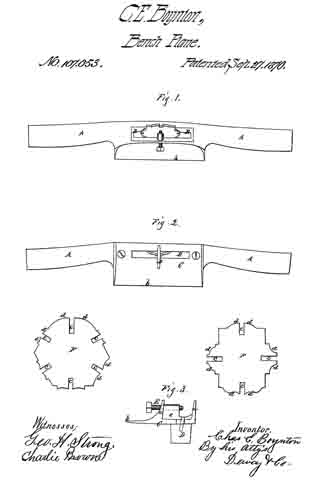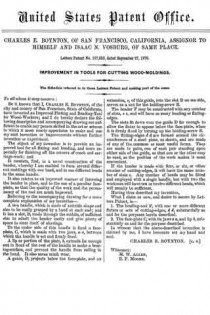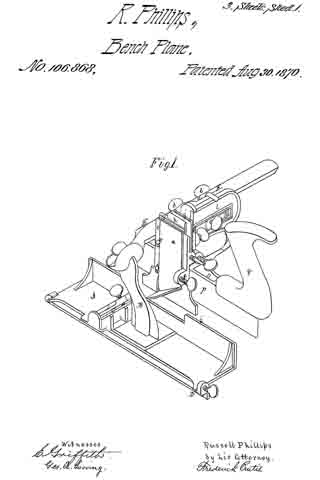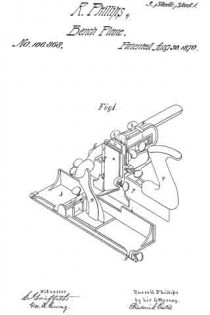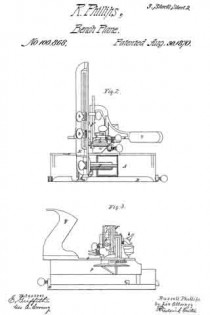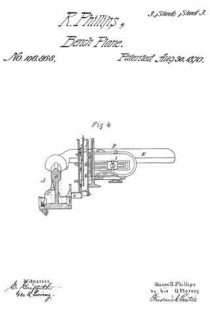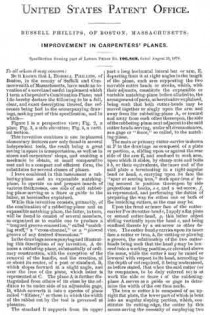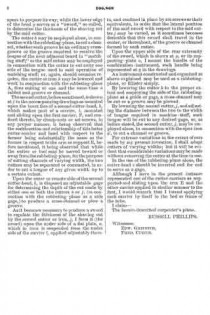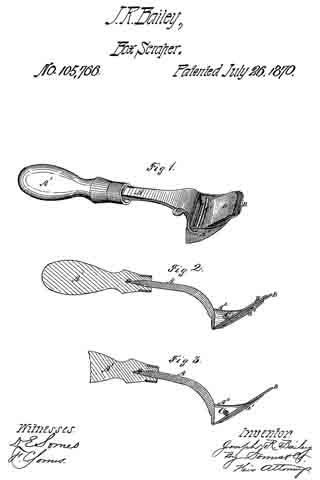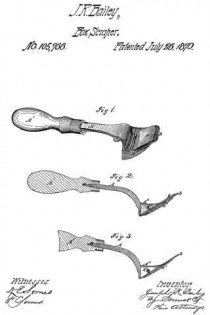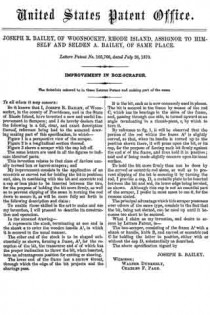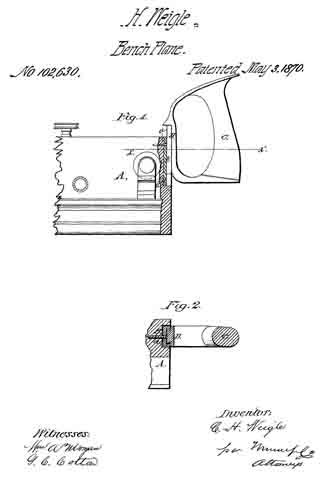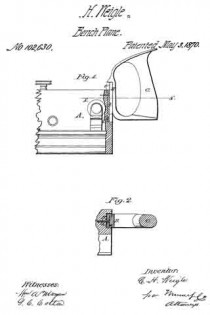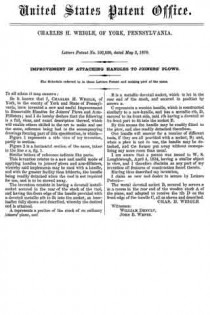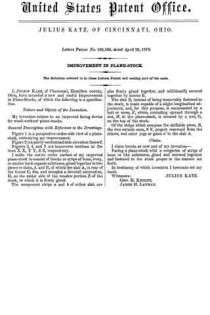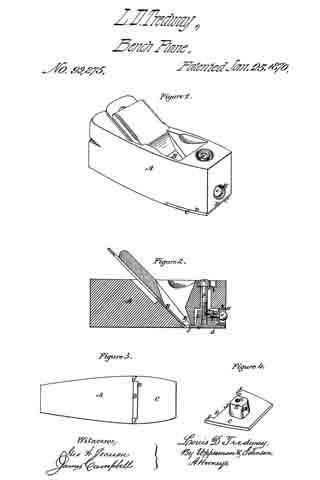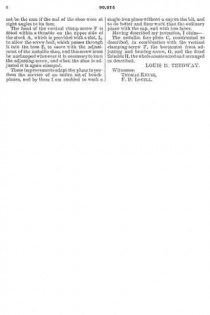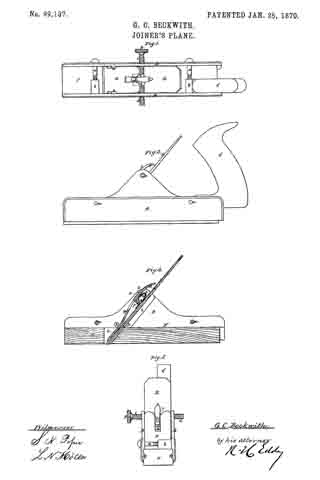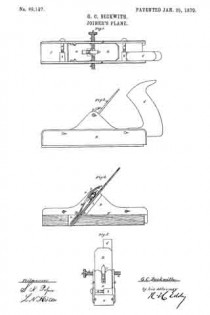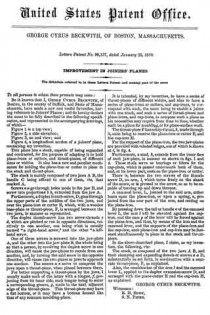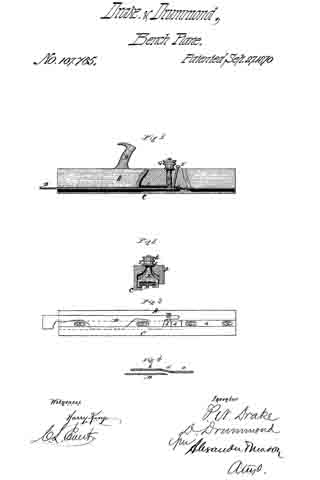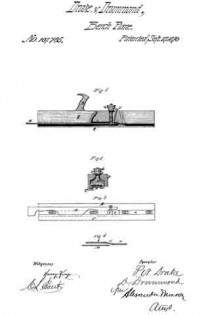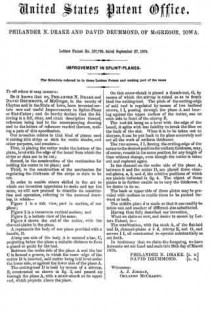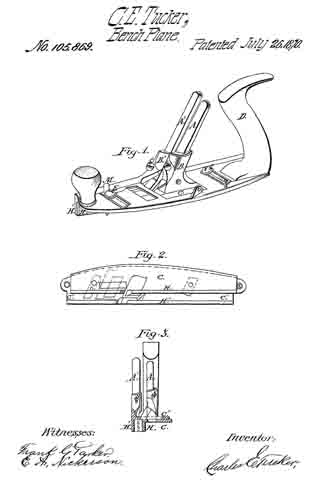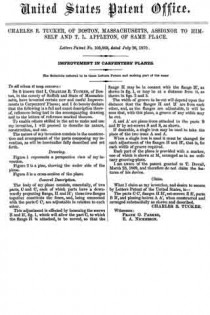No. 110,168 – Improvement In Spoke-Shaves (George N. Stearns) (1870)

United States Patent Office.
GEORGE N. STEARNS, OF SYRACUSE, NEW YORK.
Letters Patent No. 110,168, dated December 13, 1870.
_________________
IMPROVEMENT IN SPOKE-SHAVES.
_________________
The Schedule referred to in these Letters Patent and making part of the same.
_________________
To all whom it may concern:
Be it known that I, GEORGE N. STEARNS, of the city of Syracuse, in the county of Onondaga and State of New York, have invented a new and improved Mode of Spoke-Shave; and I do hereby declare that the following is a full, clear, and exact description thereof, reference being had to the accompanying drawings and to the letters of reference marked thereon making a part of this specification, in which —
Figure 1 is a perspective view of the same.
Figure 2 is a sectional view, showing the gauge, one on each side of the knife, and the adjusting-screw inserted in the stock.
This invention relates to a new adjusting spoke-shave.
One object of my invention is in adjusting both sides of the gauge iron; the arms at the same time, thereby presenting a true and even cut the entire length of the knife.
To enable others skilled in the art to make and use my invention, I will proceed to describe its construction and operation.
In the accompanying drawings —
A represents the stock, which may be made any suitable shape or size, and of wood or metal. I prefer to make it in the shape shown in the drawing A, and of metal.
b represents the screw, inserted in the stock A for the adjusting of the gauge e e to and from the knife d.
The gauge e e is fastened to the stock A by the means of two bolts F F at the end of the arms g g.
The knife d is fastened to the stock A by the means of two screws C C, the knife d being stationary.
I am aware that other spoke-shaves have been constructed before my invention in which adjusting-gauges have been used in conjunction with knives, but such gauges and substances were differently arranged from mine, and are liable to many serious objections, which are removed by my arrangernents.
Therefore, I do not claim, broadly, the adjusting-gauge when arranged upon a different principle from that involved by my arrangements.
Having thus described my invention,
What I claim as new, and desire to secure by Letters Patent, is —
The spoke-shave herein described, consisting of stock A, gaugee e, constructed, arranged, and operating substantially as described.
GEO. N. STEARNS.
Witnesses:
A. C. MESSENGER,
HARRY GIFFORD.


